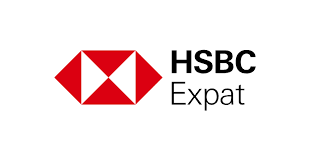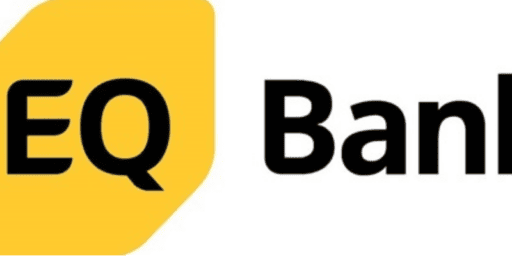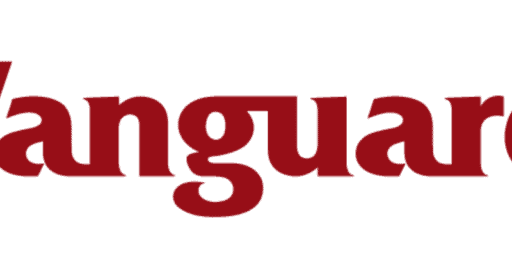Smith Manoeuvre Portfolio – June 2011
For those of you just joining us, below is my portfolio that is leveraged with money borrowed from my home equity line of credit (HELOC). As the money borrowed is used to invest, the interest charged is tax deductible. I write an update every so often to show new positions added along with any market gains/losses. For more details on the strategy and procedure, check out my modified smith manoeuvre strategy and my comparison of online stock brokers.
It’s been half a year since the last update (Dec 2010) but despite the lengthy period between updates, there has been very little activity in the account. However, there have been a couple of highlights in the dividend income. As I’ve picked stocks that have a history of increasing their dividend, there have been numerous dividend increases since the last update. In addition, we crossed the threshold of $2,000 per year in dividend income, $2,200 to be more accurate.
As well, there were two additions to the portfolio, Rogers Communications (T.RCI.B) and George Westin Ltd (T.WN). I bought Rogers in March 2011 when it was pulling back to an attractive price/earnings and yield where other Canadian telecoms were taking off. In addition to telecom, I added George Westin Ltd for exposure to the consumer market. T.WN owns Loblaws (on my watch list during last update) as well as the bakery that sells their goods to the popular grocery chain.
My dividend watch list remains similar and not much has moved due to high prices. I am looking to increase my position in T.BMO, T.TD, T.ENB, T.FCR and add new positions in T.CNR, T.BPO, and T.PSI (new on the list) when their valuations become attractive.
The Smith Manoeuvre Portfolio as of June 2011:
| Stock | Symbol | Shares | Avg Buy Price | Total | Div/Share | Yield |
| Royal Bank | RY.T | 75 | $47.62 | $3,571.25 | $2.16 | 4.54% |
| CIBC | CM.T | 45 | $67.14 | $3,021.25 | $3.48 | 5.18% |
| Power Financial | PWF.T | 105 | $35.14 | $3,689.65 | $1.40 | 3.98% |
| Scotia Bank | BNS.T | 105 | $41.91 | $4,400.52 | $2.08 | 4.96% |
| Manulife Financial | MFC.T | 125 | $33.12 | $4,139.48 | $0.52 | 1.57% |
| Fortis Properties | FTS.T | 150 | $25.63 | $3,843.98 | $1.16 | 4.53% |
| TransCanada Corp | TRP.T | 100 | $33.50 | $3,349.74 | $1.68 | 4.52% |
| AGF Management Limited | AGF.B.T | 50 | $22.71 | $1,135.49 | $1.00 | 4.40% |
| Bank of Montreal | BMO.T | 25 | $44.17 | $1,104.24 | $2.80 | 6.34% |
| Husky Energy | HSE.T | 135 | $32.53 | $4,391.27 | $1.20 | 3.69% |
| TD Bank | TD.T | 50 | $48.24 | $2,412.23 | $2.64 | 5.47% |
| Enbridge | ENB.T | 80 | $18.43 | $1,494.39 | $0.98 | 5.32% |
| TransAlta | TA.T | 50 | $21.47 | $1073.49 | $1.16 | 5.40% |
| First Capital Realty | FCR.T | 160 | $9.72 | $1,574.99 | $0.80 | 8.23% |
| Canadian Utilities | CU.T | 50 | $36.40 | $1,819.99 | $1.56 | 4.29% |
| Ensign Energy Services | ESI.T | 100 | $13.81 | $1,380.99 | $0.38 | 2.75% |
| Mullen Group | MTL.T | 100 | $14.54 | $1,453.98 | $1.00 | 6.88% |
| Rogers Communications | RCI.B.T | 100 | $34.39 | $3,439.48 | $1.42 | 4.13% |
| George Westin Ltd | WN.T | 50 | $68.64 | $3,441.99 | $1.44 | 2.09% |
More Stats
- Total Cost Base of Equities (inc. fees): $50,718.61 (vs. $43,837.14)
- Market Value of Equities (June 6, 2010 – not including dividends): $58,508.90 (vs. $48,143.90)
- Total Dividends / Year: $2,201.53 (vs. $1,859.23)
- Portfolio Dividend Yield: 4.34% (vs. 4.24%)
Sector Allocation (based on market value)
- Financials: 43.38% (vs. 51.51%)
- Utilities: 15.00% (vs. 17.87%)
- Energy: 24.82% (vs. 25.58%)
- Resources: 0.00% (vs. 0%)
- Real Estate: 4.57% (vs. 5.03%)
- Consumer/Telecom: 12.23% (vs. 0%)
With regards to sector allocation, you may notice that this portfolio is fairly concentrated in financials. Note though that this is one of my accounts where I treat all of my accounts as one big portfolio. In other words, my international and other sector equity exposure are in other accounts.
Disclaimer: There have been a lot of readers who have mentioned that they are interested in a leveraged portfolio. Over the long term it may be lucrative. However, over the short term, equities are volatile and can put the portfolio deep in the red. My portfolio over 2008 is a prime example of what can happen. If you can’t stomach losing 20-30% in the portfolio in any given year, then your risk tolerance isn’t suited for leveraged investing. Here is an article I wrote answering a reader question “Should I Start the Smith Manoeuvre?” Finally, the securities mentioned in this post are not recommendations to buy or sell.
I've Completed My Million Dollar Journey. Let Me Guide You Through Yours!
Sign up below to get a copy of our free eBook: Can I Retire Yet?










Hi Stu,
What is your primary objective:
1. Get the highest possible eligible dividend.
2. Make the most money over time.
It sounds like you are focused entirely on the dividend and not the expected return of the fund or the quality of the fund manager.
We have modeled many different SM strategies. What we found is that receiving a dividend resulted in lower projected money over time (unless your taxable income is less than $39,000). The reason is that, even though you receive dividends at lower tax rates and can pay it down on your mortgage, you still end up paying some tax. If you can invest for growth and have zero distributions of any kind, then you end up with more money over time.
In addition, once you stop focusing only the dividend, you can start focusing on investing in the best possible fund based on risk/return or the best quality fund manager.
In the odd case where we have a client that really needs the cash flow more than anything else, we use a Nexgen fund that has a 9.7% eligible dividend paid monthly. The fund manager is pretty good, although he has been struggling recently because he has a huge, elaborate quant computer model. Like all computer models, there are flaws, but he still has a good long term record and is a very brilliant guy.
When we list the very best fund managers, he would not make the top of the list, but the dividend is quite good.
We can also buy the same fund with a zero distribution, instead of the 9.7% eligible dividend. Any projection shows the zero distribution makes more money. The high dividend pays the mortgage off quicker, but results in a smaller tax refund every year.
Part of the issue is the low interest environment. We can get a mortgage at 2.49% today, while secured credit lines are at 3.5%. You pay the mortgage down at 2.49%, but then reborrow at 3.5%. The credit line interest is tax deductible, but is also 1.01% higher. After tax, it is only slightly lower than the mortgage.
Meanwhile, the dividend is taxed at a lower rate, but still many times higher than deferred capital gains. You can get an eligible dividend today and pay 15-20% tax, or you can invest in a very tax-efficient fund and defer the capital gain, so that you pay 15-20% tax 20 years from now.
I don’t know your situation, but we have worked with hundreds of clients doing the SM. I think the dividend preoccupation today is mostly misguided (except for very low income people that probably should not be doing the SM).
It is normal for people to focus on dividends when the stock markets have a few bad years. Investors have forgotten that the stock markets always grow a lot in the long run. The masses tend to always buy the wrong thing. The cheaper the market is, the more defensive people invest.
These comments may or may not relate to you, but they do apply in general with investors today.
The high dividend helps for people that need income or that are entirely focused on paying down the mortgage. Tax-efficient investments work for people trying to make the most money over time.
My suggestion would be to forget dividends completely and focus on buying the highest quality fund manager in a tax-efficient fund.
Ed
to all,
I have a question that may start a lengthy debate on here, but here goes… I have started SM about a year ago with my current Investors Group advisor, I am now looking to change and manage the investments more on my own (or at least know some better 3rd party options!). My question is, the IG Dividend fund we have been using is pretty good in that it has a good dividend yield (almost 4% current), only pays out quarterly (less cash flow management) and it is a true dividend (not ROC, interest or anything else). I am looking for a similar MF that is tax efficient, but with lower MER. I am moving investments to RBC, but their Div Fund seems more like a Can Equity and pays low yield.
To clarify, my plan is to DCA (hence ETF’s are pretty costly to aquire) into the dividend paying fund, and then take the distributions and pay down mtg then re-invest again. So far I am doing well with the income, and winning the tax game as well, just looking for some suggestions on alternative funds to use. my SM portfolio is only about $30 000 or so.
thx
Have you considered integrating this approach with corporate class mutual funds? Many of these return their income as ROC and have little or no distributions for the year. I think by avoiding offsetting your mortgage interest deductions against dividends from your portfolio on an annual basis you could instead offset against employment income which would hopefully give you a tax return to accelerate the conversion from bad debt to good debt. Any thoughts?
Hey CF, yes, it’s yield on cost or the current yield based on my adjusted cost base.
FT,
If I’m not mistaken the yield you show is on your original investments, not what someone would get if they invested now. It would be helpful to clarify that if I’m correct in my assumption.
Thanks for the update Howard. Yes you are right, every stage of investing should have different priorities.
JNK,CDZ,ZWB,XCB,GLD,,VWO,, Reinvest the Dividends through DRIP, this way you are not trying to outguess the market and one bad stock call can erase a lot of gains.
MRK.JNJ,MMM are also quality holds that give a nice dividend and also give you exposure to US $.
I am almost 70, at the point where watching and worrying is taking a back seat to living, at some point the stress of holding individual Stocks loses its’ appeal.
IMO.
Thanks FT! Keep up the good work with this site. =)
A lot of research has shown that you can achieve a well balanced portfolio of stocks with surprisingly few stock selections. If you are focusing just on Canadian dividend yielding stocks, holding 10 or 15 is more than enough to capture what would be mirrored by a more extensive ETF. Again, though, it really only begins to make sense if you are able to purchase in fairly large amounts, $5,000 is my preference, so that the brokerage fees become very low overall. You can rotate out a few losers as you require but for the most part your dividend portfolio is just on autopilot: monitor and reap the rewards. Add a few additional stocks as you have extra funds to add. The key with your basket of 10-15+ stocks is to ensure that you have a good sector coverage within that selection of stocks: financials, energy, consumer goods, etc. It is a bit difficult given the small selection of good yielding Canadian dividend stocks, but you can get the job done with a bit of careful selecting.
FT,
Impressive list of equities! I realize the sum of these stocks is only one account in larger portfolio, but pretty great all the same.
Plus, you have no mortgage ;) I wish. Hopefully in another 10 years, I’ll be with you.
Cheers,
Mark